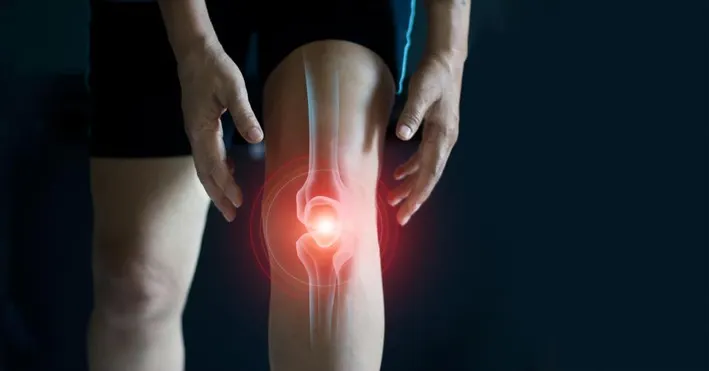Our body goes through many changes as we get older. Blood vessels lose their elasticity, fats build up on their walls, bones weaken, and their density decreases. Among conditions like diabetes and hypertension, 71% of older adults also experience joint pain. The problem is prevalent among people of all age groups
Joint pain can have various causes, from degenerative changes with age to trauma or injury. In this article, we will discuss three common causes of joint pain, remedies you can try at home to relieve pain, and determine when to get professional help.
Page Contents
Common Causes

Source: forbes.com
The following conditions typically cause joint pain:
1. Osteoarthritis
Arthritis is the most common cause of joint pain, and one in four US adults have arthritis. There are more than 100 types of arthritis, but the most common form is osteoarthritis, a degenerative joint disease that develops over years.
Cartilage covers the bony surfaces of a joint to help move the bones against each other smoothly with minimal friction. However, with age, the cartilage around a joint starts to thin and break, and the surface becomes rough.
At this point, joint movements become inefficient, so the surrounding tissues work harder to ensure regular and smooth movements as the cartilage repairs itself. With time, this can change the structure of a joint, causing symptoms like joint stiffness, pain, swelling, and a limited range of joint movements. With this condition, joint stiffness and some pain are often felt after rest. However, as you resume activity, the pain starts again and worsens as the day passes.
Osteoarthritis can affect any joint in the body. Still, the most commonly affected are the ones we repeatedly use in our everyday life, for example, the knee joint, hip joint, and joints of the hands or feet. Apart from aging, other common causes of the condition include obesity, a history of injury, joint overuse, and a family history of Osteoarthritis.
2. Bursitis
Bursae are fluid-filled membranous sacs surrounding your joints. They separate a joint’s bones and the surrounding soft tissue like tendons, ligaments, muscles, and skin, lubricating the joints and reducing friction between the bones and surrounding tissues during joint movements.
Bursitis is the inflammation of the bursae around a joint. Typically a bursa is only filled with a thin film of fluid. However, the fluid content in inflamed bursa increases, causing them to enlarge. This increase in size leads to discomfort, pain, swollen joints, and limited joint movements. The condition occurs due to repeated minor traumas, strain injuries, or infections. Other risk factors include improper posture, repetitive joint use in sports, aging, and chronic medical conditions.
3. Tendonitis
Tendonitis is the swelling and inflammation of tendons caused by muscle strain, overuse, and injury. Tendons in the shoulder, elbow, wrist, knee, and heel are more prone to tendonitis.
You are at a greater risk of tendonitis if you play certain sports, like swimming, golfing, basketball, or bowling, or have a job that frequently requires overhead lifting or repetitive motions. Certain diseases like diabetes or rheumatoid arthritis and some antibiotics like quinolones can also cause it.
Tendonitis can lead to joint pain, swelling, tenderness, stiffness, and a limited range of joint movements. The pain is typically dull, concentrated around the affected joint, and increases with joint movement or touch. Mild tendon injuries usually resolve within two weeks with proper care at home. However, if the pain doesn’t improve within a few days and only worsens, you must get checked out by a doctor.
Remedies for Joint Pain

Source: thelist.com
If your pain is mild, you can manage it by using the following two techniques:
Hot and Cold Therapy
Hot and cold therapy can be an effective and quick way to relieve joint pain at home. Cold therapy on the affected area can reduce blood flow by causing the vessels to constrict, reducing swelling and inflammation. Cold therapy should be used in acute flare-ups of pain, for example, the onset of joint pain when you physically exert it in some way. You can do cold treatment by wrapping ice in a towel and applying it to the affected area. You must never directly apply the ice to the skin.
Heat therapy can increase blood flow in an area by causing the vessels to dilate, bringing in more nutrients and oxygen to the joint. Heat treatments are especially effective for stiff joints, especially for people who suffer from morning joint stiffness due to arthritis. Heat treatments can be done by taking a warm shower or bath or applying heating pads to the painful area.
Pain Relievers and Ointments
Joint pain, stiffness, and inflammation can be countered using over-the-counter NSAIDs like aspirin, ibuprofen, and naproxen. You can also use topical medications like creams, roll on pain relief gels, sprays, or patches.
Most of these topical medications contain a chemical called capsaicin from chili peppers. It can inhibit the activity of nerve cells that send pain signals to the brain. Other topical medications contain salicylates, the chemicals found in aspirin.
When to See a Doctor for Joint Pain

Source: health.clevelandclinic.org
In some cases, joint pain can improve with home remedies and care. However, when your condition fails to improve, you must get professional help. You should immediately see a doctor if:
- the area around the joint is swollen, red, and tender to the touch
- if you have a fever but no flu
- if the pain is severe and has persisted for more than three days.
- If the joint appears deformed
- If you can’t move the joint at all
The doctor will try to narrow down the potential causes for your condition through various tests, like X-rays and blood CP, so they can start effective treatment immediately.
Endnote
Joint pain can have many causes. It can either be caused by inflammation of the bursae and tendons or by degeneration of cartilage-lined contact surfaces of joints. You can try topical medications, non-prescription painkillers, cold packs, and heat packs to manage the pain at home. However, it would be best to get professional help if your pain persists for over three days or worsens, you have a fever without flu, your joint appears deformed, or the joint is completely immobile. Timely treatment can prevent your condition from worsening.




